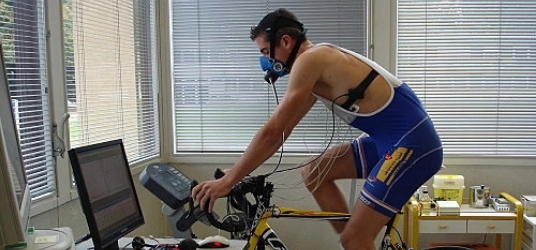Core body temperature: A key factor in optimizing sports performance and training for elite athletes
In high-level sports, athletes frequently push their bodies to the limits of their potential. Variations in core body temperature can impact endurance, strength, fatigue perception, motor coordination, cognitive performance and decision-making. A deep understanding of thermoregulation mechanisms, specific to both the individual and their environment, and proper management of core body temperature fluctuations are essential for maintaining optimal physical, cognitive, and sports performance, as well as for effective recovery.

Thermoregulation efficiency, muscle function and fatigue
During physical activity, most of the energy produced by the muscles is released as heat, leading first to an increase in muscle temperature and then to a rise in core temperature. To counteract this heat buildup, the body activates cooling mechanisms such as sweating and increased peripheral blood flow, which aid convection and conduction processes.
As mentioned earlier, excessively high core temperatures negatively affect both physical and cognitive performance for two main reasons. First, an elevated core body temperature impairs muscle function and accelerates the sensation of fatigue. Simultaneously, the body must divert cardiovascular resources to regulate core temperature (a process known as hemodynamic redistribution), which reduces the resources available for sustaining athletic performance insight and endurance. However, considering that:
– Thermoregulation capabilities vary from person to person, and
– These capabilities can be improved through specific training protocols.
Core body temperature data collection emerges as a crucial factor in optimizing sports performance.
By assessing individual thermoregulation capacities, tracking the implementation of optimization protocols, and collecting data on core body temperature in real competition scenarios, an athlete’s ability to perform effectively in demanding environments can be significantly enhanced.portive.
Hydration and thermal regulation
Hydration plays a key role in core body temperature dynamics during exertion.
Sweat evaporation is the primary method of heat dissipation during exercise. However, excessive sweating can lead to dehydration, which in turn impairs the body’s ability to regulate temperature. Beyond its immediate negative impact on an athlete’s performance, this dehydration cycle can lead to failure of multiple vital functions.As previously stated, collecting core body temperature data and optimizing an athlete’s thermoregulation mechanisms are essential for tracking and improving sports performance.



Adapting to challenging environments
Endurance events in extreme conditions pose a significant risk of excessive increases or decreases in core body temperature, which can negatively affect both physical and cognitive performance.
Many strategies exist to minimize the impact of environmental factors on core temperature fluctuations and, consequently, on athletic performance. These include:
– Specialized training protocols,
– Wearing cooling vests,
– Cold water immersion,
– Use of technical clothing,
– Specific hydration and nutrition plans.
Collecting core body temperature data and tracking body temperature variations allow for fine-tuning and optimizing these strategies, ensuring that performance levels remain as high as possible despite environmental constraints.
Performance data collection and recovery
Post-exercise cooling strategies support and accelerate recovery. Following intense physical activity and the associated rise in body temperature, the body must return to its baseline temperature as quickly as possible to ensure optimal recovery. Prolonged elevation of core body temperature after exercise can extend recovery time by increasing muscle inflammation and slowing tissue repair.
Cooling strategies implemented post-exercise promote and enhance recovery. Collecting core body temperature data helps quantify, refine, and optimize these recovery strategies, providing athletic performance insight that informs better training adaptations and faster recovery protocols.

Accurate and reliable data collection of core body temperature and body
temperature fluctuations is a powerful tool for optimizing athletic performance. It
enables the personalization of training and recovery protocols and provides
objective data on the effectiveness of countermeasure strategies.
Find out more about

